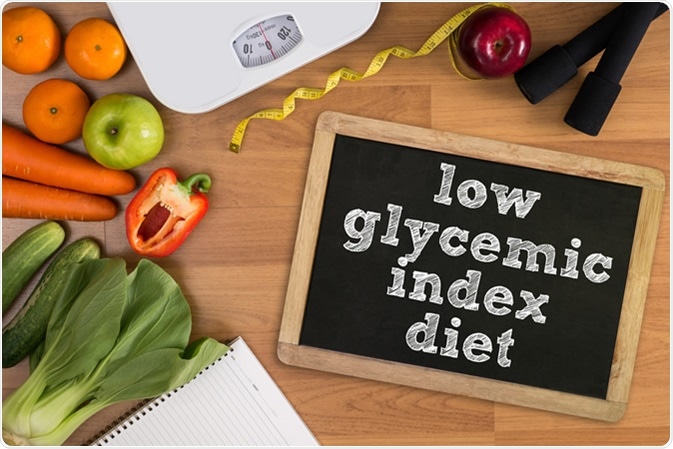The South Beach Diet is a weight-loss plan that was created in 2003 by cardiologist Arthur Agatston, who first described the diet in his bestselling book "The South Beach Diet: The Delicious, Doctor-Designed, Foolproof Plan for Fast and Healthy Weight Loss.”

This popular diet is named after the sun-kissed beaches of Miami in Florida and the book has sold more than five million copies. The diet is so popular because it promises dieters rapid weight loss, of up to 13Ib in one fortnight, with people being able to expect to lose most of that from their abdominal region. The eating plan is made up of less carbohydrates than a typical diet is, but is richer in protein and healthy fats. Carbohydrates can still be eaten, but dieters are encouraged to eat “good,” rather than “bad” carbohydrates, as determined by their glycemic index and glycemic load.
The diet also educates people about dietary fats and which unhealthy fats should be replaced with healthier ones. The benefits of eating fiber and whole grains is also highlighted and the consumption of fruits and vegetables is encouraged. The aim is to alter the balance of foods eaten overall, in a way that promotes weight loss and health.
Basic Principles
The diet follows the same principles as all glycemic index (GI)-based diets. When following a low-GI diet, foods with a high glycemic index (“bad” carbs) are forbidden since they tend to increase blood sugar levels more sharply, more quickly and for longer periods than low-GI foods (“good” carbs).
Research indicates that this sharp rise in blood glucose boosts hunger, causing people to eat more, gain weight and increase their risk of diabetes -all of which are risk factors for cardiovascular disease.
The Theory
After ingestion, carbohydrates in food are broken down into simple sugars, which are absorbed into the bloodstream. The resulting increase in blood glucose triggers the pancreas to release insulin, which instructs cells to remove sugar from the blood for use and storage of energy.
Carbohydrates with a high GI such as white bread, jacket potatoes, and bagels cause a sharp and rapid rise in blood glucose, triggering a large amount of insulin to be released. This results in a sudden fall in blood sugar that leaves a person feeling short on energy, hungry, and craving for more carbohydrates until they eat again. Repeating this pattern can lead to weight gain, as well as eventually causing the body to become resistant to the action of insulin. When insulin fails to trigger cellular uptake of sugar from the blood, the cells are deprived of energy. Another response is that the body becomes more effective at storing this energy in the form of fat as an energy source, particularly around the abdominal region.
Carbohydrates with a low GI, such as pulses and pasta, release sugar slowly into the blood, causing a steadier release of insulin and long-lasting uptake of sugar by cells. This means the person is less likely to feel hungry, crave carbohydrates and to overeat. The body is also less likely to develop insulin resistance, meaning blood glucose is taken up and used by cells for energy, instead of being stored as fat.
A Typical Day’s Eating Plan
The plan below is an example of a typical South Beach diet for one day.
- Breakfast: An omelet with smoked salmon, or poached eggs with ham, and a cup of tea or coffee
- Lunch: Shrimp and vegetable salad or broccoli/cauliflower cheese bake and a glass of water
- Dinner: Grilled tuna or pork, with salad and grilled vegetables or grilled chicken with spinach and goat cheese stuffing
- Dessert: Ricotta cheesecake or tofu chocolate cake
- Snacks: Snacks such as roasted chickpeas and Muenster cheese can be enjoyed throughout the day
References
- http://www.mayoclinic.org/healthy-lifestyle/weight-loss/in-depth/south-beach-diet/art-20048491
- http://www.weightlossresources.co.uk/diet/south_beach_review.htm
Further Reading
- All Dieting Content
- Low Calorie and Very Low Calorie Diets
- Diabetic Diet
- DASH Diet for High Blood Pressure
- High Protein Diet
Last Updated: Aug 23, 2018

Written by
Sally Robertson
Sally has a Bachelor's Degree in Biomedical Sciences (B.Sc.). She is a specialist in reviewing and summarising the latest findings across all areas of medicine covered in major, high-impact, world-leading international medical journals, international press conferences and bulletins from governmental agencies and regulatory bodies. At News-Medical, Sally generates daily news features, life science articles and interview coverage.
Source: Read Full Article
